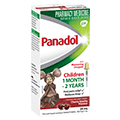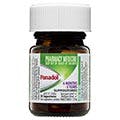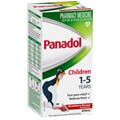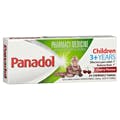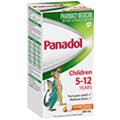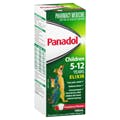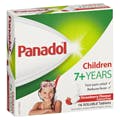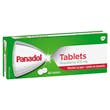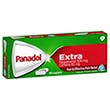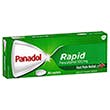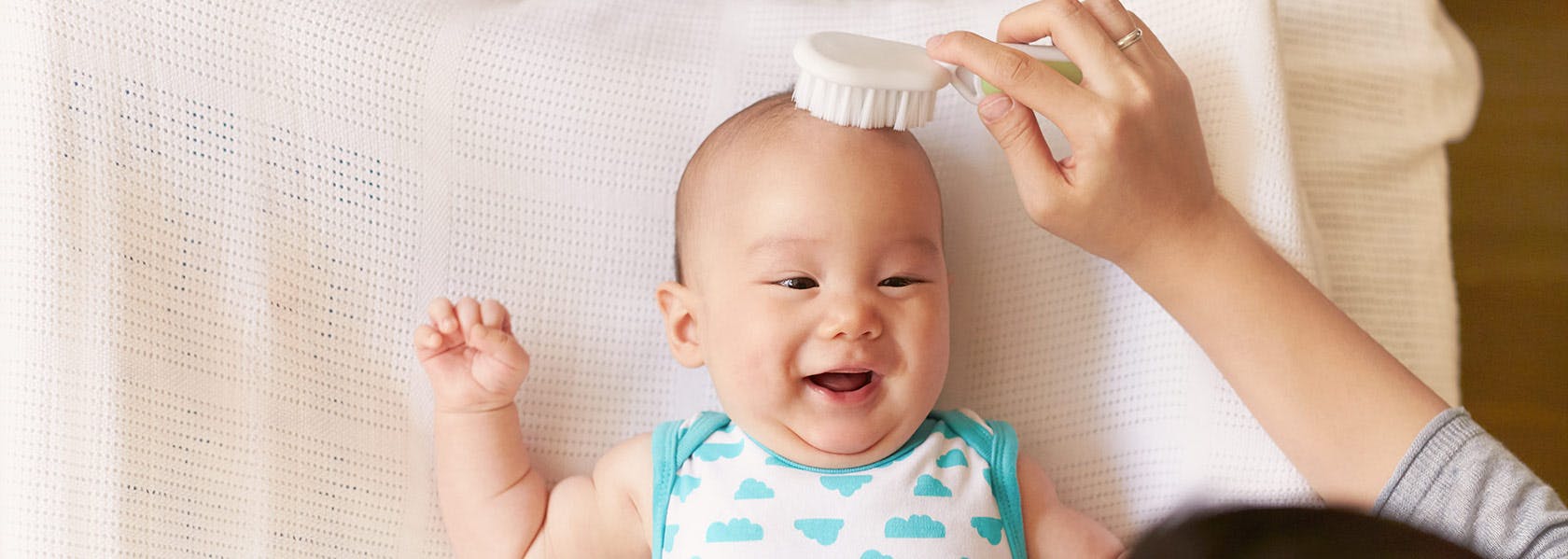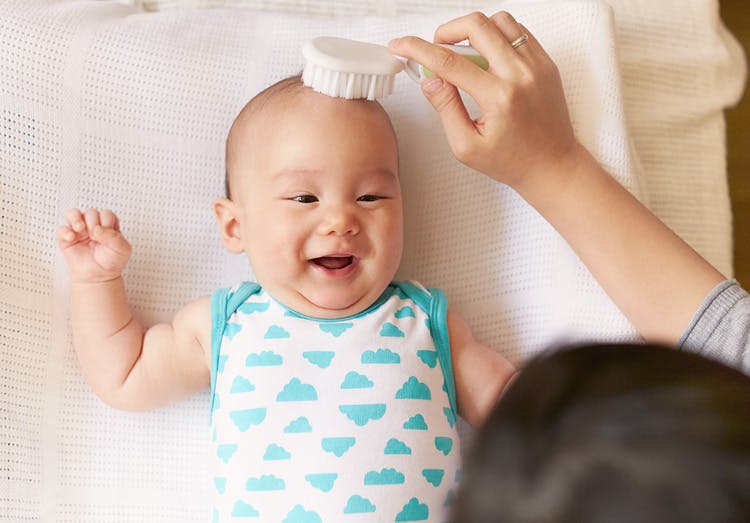

Colourfree Baby Drops 1-2 Months

Colourfree Suspension 1-5 Years

Chewable Tablets 3+

Suppositories 6 Months - 5 Years

Colourfree Suspension 5-12 Years

Elixir 5 - 12 Years

Suppositories 5-12 Years

Soluble 7+

Panadol Tablets

Panadol Caplets with Optizorb Formulation

Panadol Tablets with Optizorb Formulation

Panadol Gel Caps

Panadol Mini Caps

Panadol Suppositories

Panadol Back & Neck

Panadol Extra Caplets

Panadol Rapid Soluble

Panadol Rapid Caplets

Panado Rapid Handipak

Panadol Back & Neck Long Lasting

Panadol Osteo

Panadol Cold & Flu + Decongestant

Panadol Cold & Flu - Flu Strength (Day & Night)

Panadol Cold & Flu Relief + Cough

Panadol Cold & Flu MAX Hot Lemon
Compare Now (0/5)
- Product
- Format
- Age
- Key Features
- Ingredients

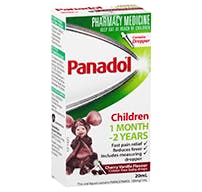
Colourfree Baby Drops 1-2 Months
- Concentrated Drops
- 1 Month - 2 Years
- Gentle on Tiny Tummies
- 500mg Paracetamol
- No gluten, lactose or sugar

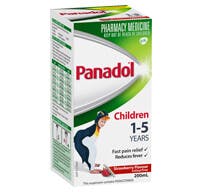
Colourfree Suspension 1-5 Years
- Suspension
- 1-5 Years
- Strawberry/Orange Flavour
- Active Ingredient: Paracetamol 24 mg/mL

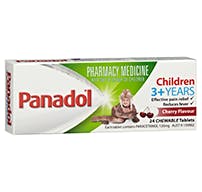
Chewable Tablets 3+
- Dissolvable Tablets
- 1-5 Years
- Perfect For Travel
- Active Ingredient: 120mg of Paracetamol per tablet


Suppositories 6 Months - 5 Years
- Suppositories
- 6 Months - 5 Years
- For vomiting
- Active ingredient: Paracetamol 125mg per suppository.

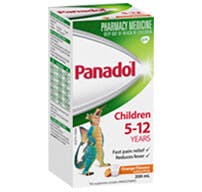
Colourfree Suspension 5-12 Years
- Suspension
- 5-12 Years
- Strawberry/Orange Flavour
- Active ingredient: Paracetamol 48 mg/mL

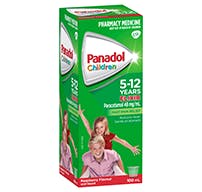
Elixir 5 - 12 Years
- Suspension
- 5-12 Years
- Fast & gentle relief
- Active ingredient: Paracetamol 48 mg/mL

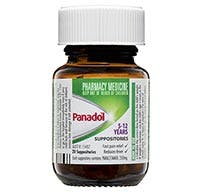
Suppositories 5-12 Years
- Suppositories
- 5-12 Years
- For vomiting
- Active ingredient: 250mg Paracetamol per suppository

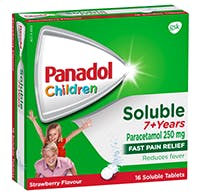
Soluble 7+
- Effervescent Tablets
- 7+ Years
- Absorbed quicker
- Active ingredient: Paracetamol

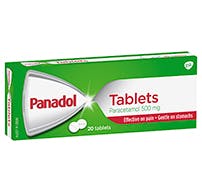
Panadol Tablets
- Tablets
- 12+ Years
- Basic Pain
- Active ingredient: 500mg Paracetamol

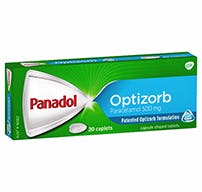
Panadol Caplets with Optizorb Formulation
- Caplets
- 12+ Years
- Quicker Absorbtion
- Active ingredient: 500mg Paracetamol

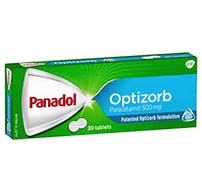
Panadol Tablets with Optizorb Formulation
- Tablets
- 12+ Years
- Quicker Absorbtion
- Active ingredient: 500mg Paracetamol

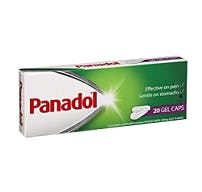
Panadol Gel Caps
- Caplets
- 12+ Years
- Easier to swallow
- Active ingredient: 500mg Paracetamol

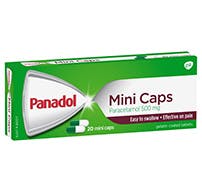
Panadol Mini Caps
- Caplets
- 12+ Years
- Easier to swallow
- Active ingredient: 500mg Paracetamol


Panadol Suppositories
- Suppositories
- 12+ Years
- For vomiting
- Active ingredient: 500mg Paracetamol per suppository.

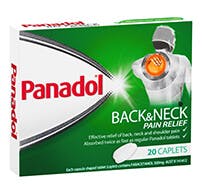
Panadol Back & Neck
- Caplets
- 12+ Years
- Fights Back Pain
- Active ingredient: 500mg Paracetamol

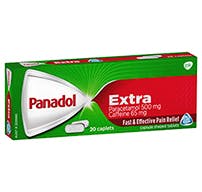
Panadol Extra Caplets
- Caplets
- 12+ Years
- Fight Tough Pai
- Active ingredient: 500mg Paracetamol , 65mg caffeine

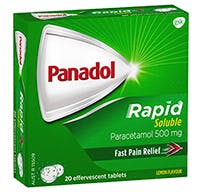
Panadol Rapid Soluble
- Dissolvable Tablets
- 12+ Years
- Absorbed 2x Faster
- Active ingredient: 500mg Paracetamol

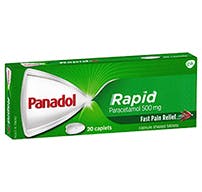
Panadol Rapid Caplets
- Caplets
- 12+ Years
- Absorbed 2x Faster
- Active ingredient: Paracetamol


Panado Rapid Handipak
- Caplets
- 12+ Years
- Absorbed 2x Faster
- Active ingredient: 500mg Paracetamol


Panadol Back & Neck Long Lasting
- Caplets
- 12+ Years
- Up to 8 hours
- Active ingredient: 655mg Paracetamol


Panadol Osteo
- Tablets
- 12+ Years
- Up to 8 hours
- Active ingredient: 665mg Paracetamol


Panadol Cold & Flu + Decongestant
- Caplets
- 12+ Years
- With Decongestant
- 500mg Paracetamol


Panadol Cold & Flu - Flu Strength (Day & Night)
- Caplets
- 12+ Years
- Day & Night Relief
- 500mg Paracetamol


Panadol Cold & Flu Relief + Cough
- Caplets
- 12+ Years
- Cough Relief
- 500mg Paracetamol
Minimise
Your Baby's Daily Routine 0-4 Weeks
The first few weeks are a blur. You may not know what day it is, let alone what time it is, or even if you’ve have had a shower yet. If you’re still in your night clothes then you probably haven’t had a shower, let alone breakfast!
You will feel unsure of yourself. This is to be expected, just like when you’re learning any new job. Your usual daily routine has changed – now you can’t rely on anything happening at the same time each day. Your baby has no pattern yet and neither do you.

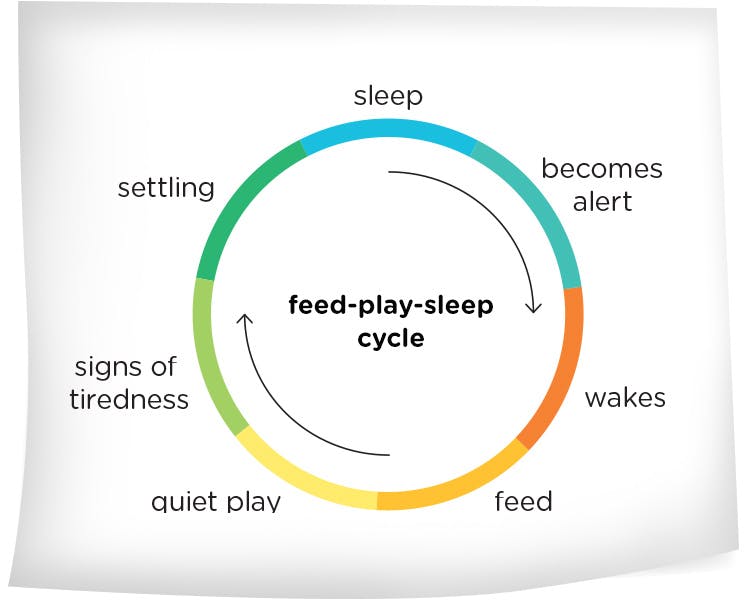

In the beginning, your baby’s day is a continuous cycle of feeding, brief awake time, settling and sleep.
By about 3 weeks of age you will notice your baby becomes more alert and more aware of their surroundings. They will seem to be demanding more, crying more and be more unsettled. This is normal. Remember that crying is baby’s main form of communication – they are telling you what they want. By this time you should be practised at your settling technique, because this is when you’ll really need it (see ‘Setting to sleep,’ p.x).
The daily cycle
In the beginning, your baby’s day is a continuous cycle of feeding, brief awake time, settling and sleep. One thing you can be sure of is that baby will want to be fed frequently – in fact some days you may think that’s all you’ve done! In the first few weeks, your baby should have 6-10 feeds in 24 hours. If they are sleepy and don’t have at least 6 feeds in 24 hours, then you need to wake them up to feed. By 4 weeks, they will be having 6-8 feeds in 24 hours.
At first you may feel that all they do is eat and sleep! In fact, during the first few weeks your baby needs at least 15–17 hours sleep in 24 hours. Each sleep will usually last about 1½-2 hours. By 4 weeks they will probably be sleeping about 15 hours in 24 hours – and you’ll probably find that your baby is suddenly is more unsettled and seems to be crying more. This is normal.
They will learn the patterns of the day and what is happening in your household by the way you respond to them when they wake up in the day, and so this should be different to the way you respond to them when they wake up during the night. Day and night feeds
When baby stirs during the day, and sends you a signal that they are waking (e.g. a soft cry), it’s time to get ready to feed them. As they wake up, you need to respond by telling them you have heard them. The fact that when they are hungry someone feeds them, and when they are distressed someone comforts them, is the basis of baby gaining a sense of security, and later confidence to separate from their parents. This sense of security or attachment to their parent plays an important part in their early brain development (see ‘Becoming a family,’ p.x).
During the day respond to your baby with a cheerful, chatty voice. This tells your baby that when Mum or Dad talks to them like this, they can expect to get up, be fed and play. During the daytime feed, keep chatting to them and tell them what you are going to do during the day. In other words, the message is that it’s daytime – awake, alert time.
However, when baby wakes during the night, your response needs to be different, to signal to them it’s not playtime. Use a night light or dimmed lighting, and respond to them with a calm, gentle voice. Feed them, but do not play with them. After the feed, change their nappy, wrap them up and put them back in their bassinet or cot. Put your hand gently on their chest for extra soothing for a few seconds before leaving them to settle to sleep.
After the first few weeks your baby will spend more time awake. And you will have more options for play.

.png?auto=format)
Play
During the first few weeks, playtime centres around feeding, bathing and nappy change activities. Take advantage of these times to interact with your baby. Look at your baby’s face when they are looking at you – this helps you bond with each other. Play music, sing or talk to your baby or even start reading to them. As most of baby’s brain development occurs in the first three years, the way you speak to, handle and respond to your baby will significantly influence their brain functions, such as speech, attachment and emotions. So as well as chatting to your baby, it’s important to touch them, play with them and read to them right from the start.
Have some fun with them – for example, during nappy changes you could move your head from side to side so that baby can follow your face with their eyes. Leave nappy off for a few minutes at change time, and do ‘bicycle’ motions with your baby’s legs, gently moving their legs backwards and forwards as if they were pushing the pedals of a bike. This also helps expel wind from their bowel. After the first few weeks your baby will spend more time awake, and you will have more options for play.
Tummy time
You should give your baby brief periods lying on their tummy while awake to get used to ‘tummy time’ which is important for their physical development. Take the opportunity to put them on their tummy for a short time when you’re changing their nappy, when they’re on your lap, or after their bath while you’re massaging their back. Do not leave them alone to play on their tummy at this stage.
Safety tips
- Make sure you support baby’s head at all times (their neck muscles are very weak).
- Don’t swing them around or throw them in the air (their brain is very vulnerable).
- Never leave baby alone on the change table, bed or any surface.
- Always keep one hand on the baby especially during nappy changes.
- Never put baby in a bouncer on top of a table or bench.
- When you take baby out for a walk using a pram or pouch, make sure they are securely strapped or clipped in.
- If you allow pets in the house near your baby, ensure they are constantly supervised. Your pet may be jealous of the new baby, so give your pet special attention and try to keep to their familiar routine.



















